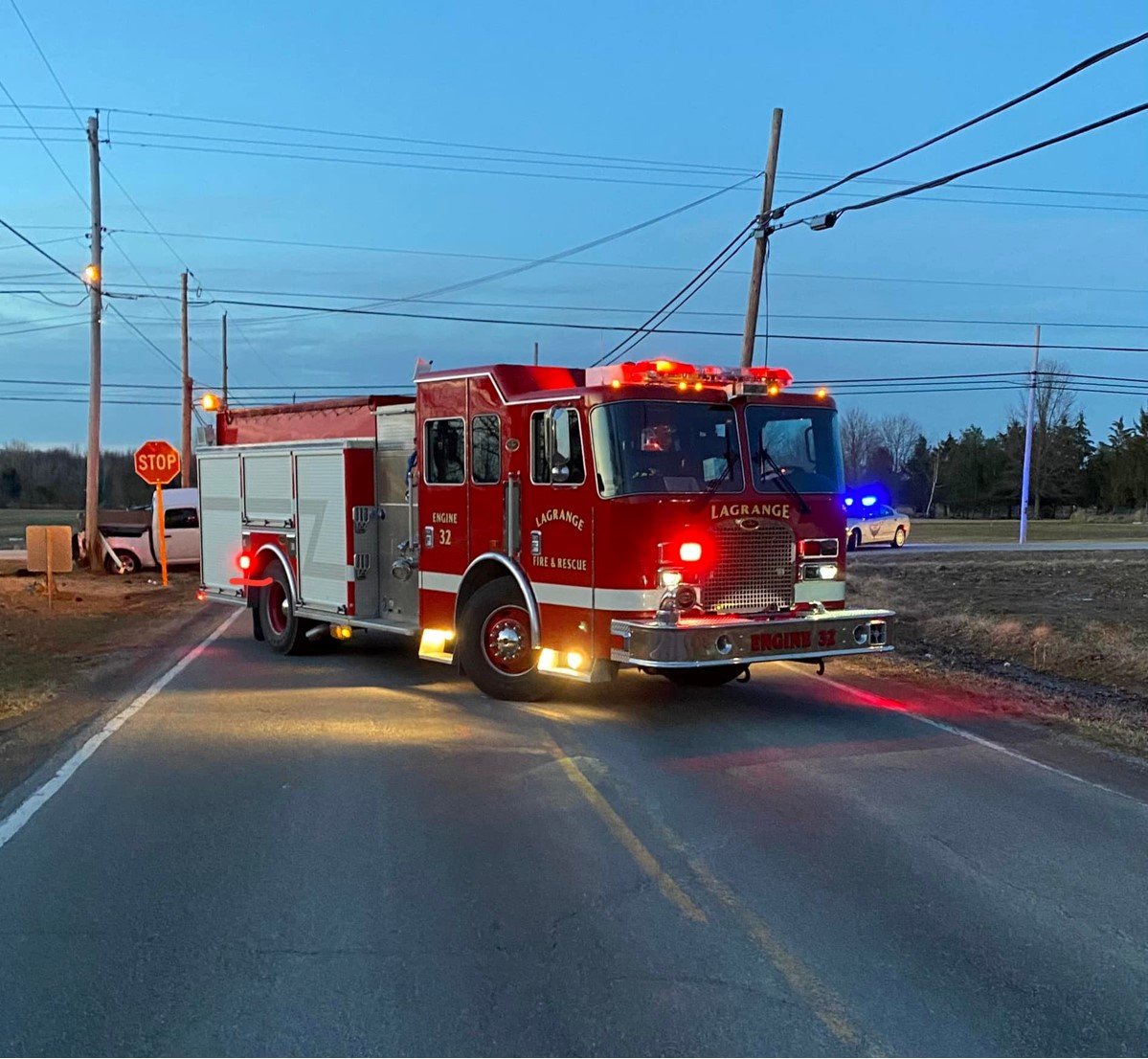
Fire and Rescue
For all emergencies dial 911
Contact Us
Fire and EMS Office
Phone: 440-355-6868-non emergency
Email: firelagrange@gmail.com
Email: emslagrange@gmail.com
Fire Chief - Mike Hornby
Assistant Fire Chief - Jerry Norton
EMS Chief - Todd Straub
P.O. Box 463
Lagrange, Ohio 44050
Records Requests
For any public records requests regarding the Fire Department, please contact the LaGrange Township Fiscal Officer
Kathy Poling
440-315-7249
lagrangetownship@gmail.com
Join the Excitement
Interested in serving your community or expanding your career?
Consider serving on the LaGrange Township Fire and Rescue team. We pay for training with a signed contract for continued service. Competitive pay and flexible scheduling available.
For more information please contact Assistant Fire Chief, Mike Hornby or the Township Trustees.
Classes Starting Soon
Classes at Lorain County Fire Chief’s Academy in late August and you can become a Firefighter for LaGrange Township.
Contact a Firefighter, Trustee or the Fire Chief for more information.
EMS Services
Several years ago we started billing for our rescue calls when transported to a hospital. Most insurances include in their premiums the cost for an ambulance transport, so it is our policy that when a township resident is billed for an ambulance transport that we accept only what your insurance pays and the resident does not get billed for any co-pays or remaining balances. Patients who are non-residents of the township are billed for the entire cost of the service.
We started billing in hopes to generate money, without raising taxes, to continue our training and to serve the community. With this money raised we have been able to send EMT’s to paramedic school so we can provide advance care on our rescue calls. These additional funds allow us to purchase new EMS and Fire equipment to maintain our emergency vehicles without additional taxes.
Open Burning
Each year several complaints of open burning are received. When they are received firefighters have to educate residents on the rules pertaining to burning in the township. The intent of this notice is to remind both the established residents along with those who are new to the community the guidelines to open burning.
You may have a recreational fire that is three foot by three foot by two foot in height. Only natural untreated dry seasoned firewood can be burned. No paneling, plywood, building materials, or yard waste may be burned. You can have a bonfire five foot by five foot by five feet with the permission of the Fire Chief and 24 hours notice. Fires must be twenty five feet away from all structures and other combustibles, including privacy fences.
You must have a method of extinguishment, water hose or appropriate fire extinguisher at the fire and the fire must be attended at all times Your fire must not produce any objectionable or offensive smoke. Agricultural burning such as fence row clearing and lot clearing must be 1000 feet from all structures and you must have written permission from the EPA.
If you have any questions about open burning you can access the Ohio EPA website at https://www.epa.gov/large-scale-residential-demolition/requirements-and-regulations-open-burning-and-fire-training
Smoke Detectors
The two most commonly recognized smoke detection technologies are ionization smoke detection and photoelectric smoke detection.
[Ionization smoke alarms] [Photoelectric smoke alarms] Ionization smoke alarms are generally more responsive to flaming fires.
How they work: Ionization-type smoke alarms have a small amount of radioactive material between two electrically charged plates, which ionizes the air and causes current to flow between the plates. When smoke enters the chamber, it disrupts the flow of ions, thus reducing the flow of current and activating the alarm. Download this chart on ionization smoke alarms (PDF, 943 KB).
Photoelectric smoke alarms are generally more responsive to fires that begin with a long period of smoldering (called “smoldering fires”).
How they work: Photoelectric-type alarms aim a light source into a sensing chamber at an angle away from the sensor. Smoke enters the chamber, reflecting light onto the light sensor; triggering the alarm. Download this chart on photoelectric smoke alarms (PDF, 782 KB).
For each type of smoke alarm, the advantage it provides may be critical to life safety in some fire situations. Home fatal fires, day or night, include a large number of smoldering fires and a large number of flaming fires. You can not predict the type of fire you may have in your home or when it will occur. Any smoke alarm technology, to be acceptable, must perform acceptably for both types of fires in order to provide early warning of fire at all times of the day or night and whether you are asleep or awake.
For best protection, use both types of smoke alarm technologies
For best protection, it is recommended both (ionization and photoelectric) technologies be used in homes. In addition to individual ionization and photoelectric alarms, combination alarms that include both technologies in a single device are available.
Lorain County’s Technical Rescue Response Team
Lorain County Technical Rescue Team which is a county-wide team made up of members from fire departments throughout Lorain County. The team is called to handle the following technical rescue situations throughout Lorain County:
Rope & High Angle Rescue
Confined Space Rescue
Trench Rescue
Structural Collapse Rescue
Swift Water Rescue
Lost Person Search
All of the specialized equipment for the team was purchased through federal grants and is stored in strategic locations throughout the county.







